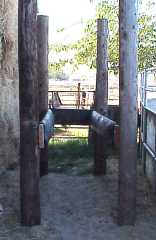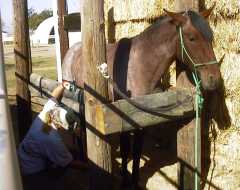Humane RestraintBuilding Yourself a
|
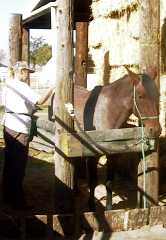
|
|
Occasionally we'll run across a horse that suffers from
"terminal fidgets" or the "yeah, buts." These horses refuse
to stand quietly and when the handler tries to correct them,
their response is to increase their avoidance response rather
than pay attention to the handler and deal with this situation.
The catch-22 here is that until the horse learns to pay attention,
he will usually continue his evasive response to certain elements
of being handled.
"Learn-Learn" and "Take Two" are a couple of effective games we will play with these horses which brings success a great majority of the time. However there are occasionally situations such as horribly overgrown feet or veterinary needs which don't allow us to attempt Learn-Learn. In addition, some horses are so preconditioned to be neurotic at the tie pole that they behave quite well when being taught in the round pen, but start self-generating stress and anxiety once at the tie pole. In these instances we needed to be able to place the horse in an environment where his choices were limited, he couldn't get hurt or hurt us, and we could work with him until he could get comfortable with being handled all over. While safe restraint is a necessary component of this chute, the fundamental objective is to use it as a learning tool.
The chute itself is 90 inches long, 26 inches wide at the front and 29 inches wide at the entrance. The 2x12 side rails are set 42 inches above the ground (measured from top of rail to ground) and are covered with quarry belting for safety and to eliminate splinters. The side and end rails are lag bolted into the utility poles. The cross tie rings in front are set at about withers height. |
Top View:
|
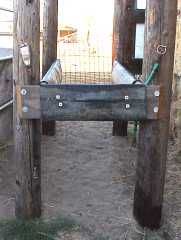
|
LEFT-
RIGHT- |
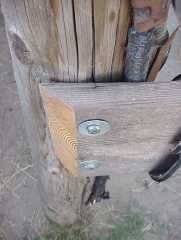
|
Continue to Handling Legs & FeetPress "Back" to return to the page that brought you hereGo to Case Study SectionReturn to Training SectionReturn to Wild Horse MentorsReturn to KBR World of Wild Horses and BurrosGo To
|


